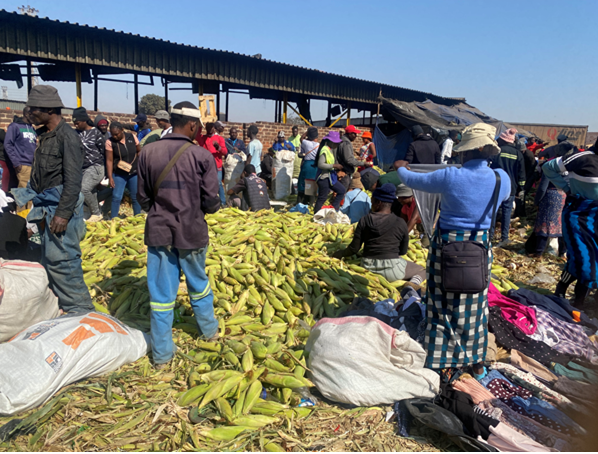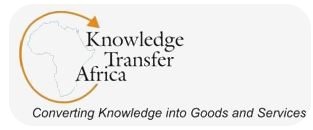Why crop and livestock assessments should not just end at production level
For several years, many African countries have become obsessed with conducting crop and livestock assessments during the rainfall-driven summer cropping season. However, such assessments have only ended at production with no systems for tracking what happens to crops after they are harvested. A lot of agricultural commodities are produced during winter through diverse irrigation systems but there is barely any assessment to understand production patterns and volumes in winter which, is becoming more significant in a changing climate.

The value of assessing the whole chain from production to consumption
While assessing hectares under crops and quantity of livestock in communities is very important, the most important question is what happens to those commodities when they are produced? How much is consumed locally? How much is sold in local markets? How much is lost or wasted due to absence of ready markets and appropriate infrastructure? Unless these critical questions are answered celebrating yields and harvests is half the story. What happens after commodities are harvested determines whether farming is a business or not.
Data gathered during crop and livestock assessments is too important to be turned into PDF documents and circulated among a few stakeholders and scholars without going back for validation in communities where the data is collected. It is through the validation process that communities can indicate what matters to them and the importance of tracking commodities after harvesting including challenges related to markets. When you visit any rural African or farming community, there is often overwhelming evidence that people are not just waiting for free hand-outs from governments or donors but trying to use local micro economies to build their own growth pathways.
Given that most of these communities depend on agricultural and natural food systems, data collected through crop and livestock assessments can be more useful at local level especially when combined with Indigenous Knowledge Systems (IKS). Many African parents are disappointed that after spending their money, livestock and other resources to send their children to school, those children are not bringing any new knowledge to the community but teaching the parents to grow cabbages, maize, small grains and other crops that the communities have grown for decades using IKS from their fore-fathers. Worse still, the ‘’educated’’ children are bringing knowledge that tries to erase indigenous food systems by promoting imported hybrids. These are some of the issues that can be covered in genuine crop and livestock assessments if done through consultative process.
Strengthening local economic drivers
When crop and livestock assessments cover the whole chain from production to consumption, local economic drivers will be strengthened because it becomes possible to see which commodities are produced in excess within particular micro economies – motivating value addition and diverse forms of food systems-related entrepreneurship. Food and agriculture stops being seen as the domain of the ministry of agriculture alone but a platform for bringing several stakeholders and other government departments toward building the local socio-economic fabric.
Local economic drivers can be the entry point for building synergies and positioning key stakeholders like relevant government departments, parastatals and other key economic actors starting from the district or any local level. It becomes possible to see points at which mandates of key stakeholders like government departments overlap around existing economic drivers. For instance, the ministry of health begins to see its role in district markets. While local authorities like Rural District Councils (RDCs) and municipalities are responsible for managing market infrastructure, the ministry of SMEs and women affairs focuses on women issues in the mass market since these markets are dominated by women. By providing food, the ministry of agriculture anchors agriculture-related entrepreneurship while also supporting the ministry of health’s mandate in nutrition.
Toward a market-driven framework and platform for local resource utilization
When data from crop and livestock assessments is extended all the way from production to markets and consumption, it can assist in consolidating initiatives that are currently too fragmented. The data can also assist in building a framework for developing markets from district level. Agriculture markets provide a framework that shows the scope of the food system at district level so that each actor can find a way of providing relevant support. Once they start working together, stakeholders can begin to address questions like to what extent are markets supporting the economy at local level? To what extent are food systems and mass markets playing a social integration role? How is absence of appropriate technology undermining the performance of value chains? How is climate change affecting local food systems and local markets from which local people earn a living?
Mapping the whole food system and tracking the movement of agricultural commodities from production zones to diverse markets can show which commodities are produced in surplus, where and when as well as quantities demanded by each market. Data can also reveal the extent to which local communities are food secure and the amount of surplus which could be a reliable source of income and livelihood for rural populations where farming is the only source of income. In the absence of careful mapping and tracking commodities leaving or coming into the local community, communities can easily lose the best indigenous crop varieties and livestock breeds. Such data should enrich regular local discussions among stakeholders. The ministry of health will appreciate the true value of agriculture and food systems to restoring public health while the ministry of agriculture will understand the Return on Investment (ROI) associated with each value chain.
Data can build a strong voice from all district stakeholders highlighting their priorities including ensuring production zones have frameworks that recognize local markets unlike always looking to external markets that often dictate prices. Depending on evidence from the grassroots, government should be able to direct some NGOs to build aggregation centres as opposed to all of them investing in production merely because it is easy to push blame to farmers when things fail. Development organizations can also be compelled to invest in data collection at district level rather than producing vegetables when local communities can do that on their own as they have been doing for decades. Instead of driving 4×4 vehicles on bad rural roads to visit village gardens, it is better for some development agencies to fix roads.
Valuing existing resources and products through data
Also critical is using data to value existing resources and products. For instance, what is the value of indigenous fruits, indigenous vegetables, tubers and wildlife found in the local community or district? No one is valuing such commodities yet they are critical economic drivers for particular local communities and districts. There is also need for a platform for expressing concerns on behalf of farmers. Where small grains are a key economic driver, they can’t be priced the same as maize which is produced profitably by highly mechanized large-scale farmers. In cases where buyers are coming from the city and sweeping commodities at peak supply when prices are low, the community should be able to monitor such practices as well as protect local resources through managing prices.
charles@knowledgetransafrica.com / charles@emkambo.co.zw /
info@knowledgetransafrica.com
Website: www.emkambo.co.zw / www.knowledgetransafrica.com
Mobile: 0772 137 717/ 0774 430 309/0712737430
